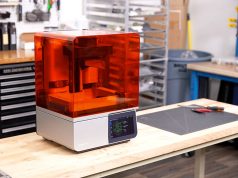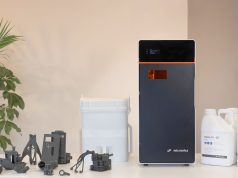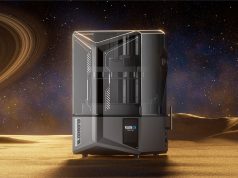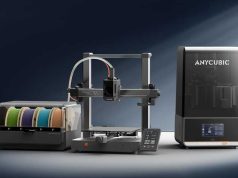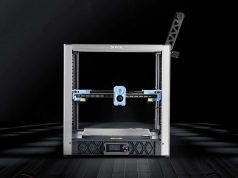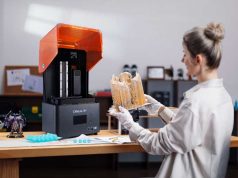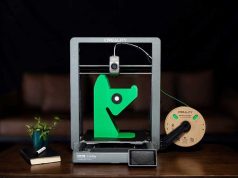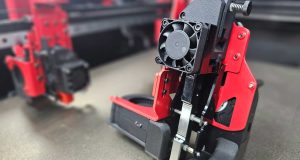After its premiere a year ago, GROB will present the GMP300 at the 2023 In- House Exhibition, a manufacturing system for the production of near-net- shape components in the field of additive manufacturing with improved properties, offering its customers a modified machine variant.
To suit the market requirements for customized and near-net-shape components, Liquid Metal Printing (LMP) was developed at GROB for a future-oriented, economically sound and at the same time flexible additive manufacturing process that eliminates the disadvantages of traditional additive manufacturing in the metalworking sector. At last year’s In-House Exhibition, GROB presented the GMP300 for the first time – a reliable, efficient and cost-conscious system technology with maximum production flexibility for individual and small-series production.
GMP stands for GROB Metal Printing, and 300 for the size of the work area, 300 x 300 x 300 mm³. The GMP300 is equipped with 3-axis kinematics and maximum axis speed of 30 m/min. The oxygen-reduced atmosphere with shielding gas protects the component from oxidation, guaranteeing consistently good material quality.
Improvements of the GMP300 are in the Details
In recent months, the GMP300 has been continuously developed further parallel to its successful launch, and will now be presented with innovations at this year’s in-house exhibition.
With a further developed protective gas concept and improved sealing, the residual oxygen content in the installation space can be further reduced to a low ppm content. Progress has also been made in materials, so that additional aluminum alloys can now be processed. Successful progress was also made in droplet generation with aluminum- magnesium alloys, which had been difficult to process. This way we successfully cleared the first hurdle to the production of magnesium-containing aluminum components. In addition to the identification and investigation of new materials, GROB is carrying out various trials to qualify already printable materials as part of a defined testing process. The goal is to identify and quantify the material-specific properties of the part produced with the process.
The company is also able to achieve further optimizations in the area of process development. With the help of additional sensors, drop size, drop speed, and part height can now be detected in situ during the printing process and corrective interventions into part production can be made. These additional quality assurance steps have significantly improved part quality and process stability.
Advantages of This Procedure
Since the presentation of the system last year, wGROB has had many discussions with interested partners and manufactured numerous individual customer components to convince customers and users of the advantages and properties of this technology. The GROB AM Team supported the companies both in the analysis of the parts and in redesigning the components in order to optimize them for production using the LMP process. In addition to first sample productions, GROB also offers the production of the first small part series as part of a printing service.
The numerous advantages of the LMP procedure were judged particularly favorably by customers during the discussions. In contrast to the known powder bed fusion process, the raw material for the GROB-developed LMP process is wire. This reduces not only the material costs, but also eliminates health and explosion hazards, dispensing with additional work steps such as component de-powdering and the sifting and processing of the powder.
Also, the LMP process is a micro-casting process and not a welding process, having little to no thermal warping. This allows for processing of non-weldable alloys. The LMP process generates a homogenous microstructure with yield strengths equal to or also sometimes greater than the raw material values.
In addition to this, the process provides impressively high flexibility and productivity. Flexibility is achieved by the ability to change materials quickly with no excessive cleaning effort, by the highly variable drop diameter and the crucible changer that allows quick changes of both the print head and nozzle. The high productivity of the LMP process is won primarily via the high build-up rates, the reduced post-processing work, and the fact that the component costs scale to only slightly above the filling level of the construction base.
Find out more about GROB at grobgroup.com.
Subscribe to our Newsletter
3DPResso is a weekly newsletter that links to the most exciting global stories from the 3D printing and additive manufacturing industry.




